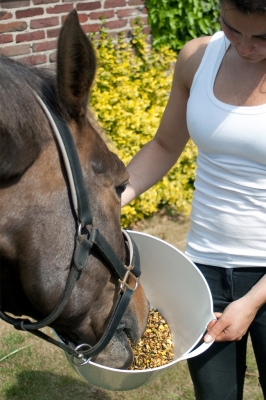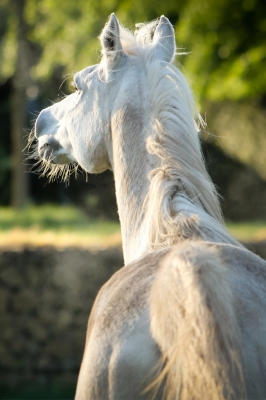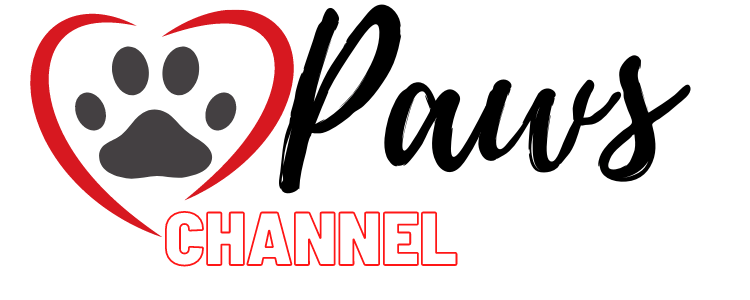Your horse’s nutritional requirements change with increasing age: although the basal metabolic rate and thus the energy requirement generally decrease, the need for essential nutrients such as high-quality proteins, vitamins, minerals and trace elements increases at the same time. So that your horse stays fit and vital into old age, you should not only ensure good posture and enough exercise, but also adjust the feeding individually to the needs of your senior.
“The optimum composition of the feed depends on the health status, body weight and metabolism of the particular horse,” said Dr. Ingrid Vervuert, specialist veterinarian of Animal Nutrition and Dietetics at the University of Leipzig. A senior food should be tailored to the specific problems of old horses. ” For example, it should compensate for a low feed intake due to dental problems, weight loss or age-related metabolic problems, “says the expert. As a rule, a senior feed is useful for horses from around 18 years of age. But health is more important than age.
When is a horse “old”?
Even if the proportion of horses that are well over 20 years or even over 30 years old due to optimized and needs-based feeding with roughage and concentrate, a horse can still be described as “old” when it reaches the 20 year mark . In human years it is already 60 years old.
How do you know that your horse is getting old?
Above all, the appearance of your horse reveals when it is getting on in years. The external appearances are also a sign that your horse is also aging “inside”.
- Lowering the back.
- Breakdown of muscles, also weight loss.
- Flabby, often drier skin.
- The eyes begin to become cloudy and deeper and deeper hollows form over the eyes.
- Your horse’s coat turns gray, especially on the face.
- Poor or longer-lasting change of coat.
- Development of typical “age-related diseases” such as dental problems, poor digestion, PPID or laminitis.
Why you should pay special attention to your senior
With age, not only do the physical characteristics become apparent, but your horse can also become more susceptible to illnesses due to the aging of the immune system. If a senior is ill for the first time, he will recover from his illness much more slowly. Feeding needs-based supplies can make a significant contribution to the regeneration or health of your old horse. Above all, make sure that you have a sufficient supply of high-quality proteins with essential amino acids.
What should you watch out for when feeding older horses?
Older horses have a higher need for nutrients. This is due, among other things, to the fact that seniors are less able to utilize their feed and any additional feed additives they need. Therefore, the type and amount of food must be adapted to these circumstances. A changed hormone balance and the slowed metabolism also contribute to the fact that the nutrients in the feed are more difficult to digest and can be absorbed by the body.
How does the feed requirement of older horses change?
The feed should have good bioavailability and be easy to digest. It is therefore important that the nutrients are of high-quality, natural quality and can therefore be easily absorbed and used by the body. At the same time, the feed should contain a sufficient amount of fiber for healthy digestion.
grass
In the summer half of the year, regular grazing is an important part of feeding. Horses with dental problems can usually eat grass better than hay or haylage because it is softer. In addition, the free movement in the pasture stimulates the general well-being of the horse. “If there is enough grass and old horses can eat in peace, 24 hours pasture from spring to autumn is ideal,” says Dr. Ingrid Vervuert. The only exception: very overweight horses and horses with metabolic diseases such as laminitis or Cushing (PPID).
Roughage or roughage substitute
How much roughage or roughage substitute your horse needs depends on the amount of grass, the state of health and the body weight of your horse. As a rule of thumb, old horses need at least 1.5 to 2% of their body weight in roughage. A horse weighing 600 kg should therefore eat 9 to 12 kg of hay, haylage or a corresponding amount of roughage substitute per day. Note that the energy content of roughage can fluctuate considerably. “The sooner the hay or haylage was harvested in the year, the higher the energy content,” says Dr. Ingrid Vervuert.
Even into old age, provided that the feed intake allows this, the main energy supply needs should be covered by high-quality roughage.
Tip: If your horse does not receive any or very little concentrated feed in addition to the roughage supply, the addition of vitamins, minerals and trace elements is very important. Regardless of age, the need can generally not be met exclusively with grass, hay or straw. Here we recommend Pavo DailyFit or Pavo Vital as a daily supplementary feed . One bricket already covers the daily requirement of vitamins and minerals without excess energy.
Concentrate feed
Older horses that are too thin or have a tendency to lose body mass often need special concentrate feed. Dr. Ingrid Vervuert recommends thermally processed cereal flakes, high-quality vegetable oils, soy meal, potato or pea flakes. “These  feeds are particularly suitable for old horses because they are easy to digest and represent high-quality protein and energy sources,” says the veterinarian. These requirements are, for example, in Pavo18Plusconsidered. Since old horses can often only make limited use of the nutrients in the food due to dental problems or possibly due to a lower secretion of digestive enzymes, energy and protein must often be fed in excess of their needs. Like the roughage substitute, the concentrate can be soaked in water. If your senior is reluctant to eat the porridge, just add a few dried carrot or apple chips, soaked sugar beet pulp or something similar. This spices up the taste and provides additional vitamins and raw fibers.
feeds are particularly suitable for old horses because they are easy to digest and represent high-quality protein and energy sources,” says the veterinarian. These requirements are, for example, in Pavo18Plusconsidered. Since old horses can often only make limited use of the nutrients in the food due to dental problems or possibly due to a lower secretion of digestive enzymes, energy and protein must often be fed in excess of their needs. Like the roughage substitute, the concentrate can be soaked in water. If your senior is reluctant to eat the porridge, just add a few dried carrot or apple chips, soaked sugar beet pulp or something similar. This spices up the taste and provides additional vitamins and raw fibers.
Zinc, selenium and copper
Senior horses have a higher need for certain vitamins and minerals, such as zinc, selenium and copper. Zinc plays a major role in hair and skin metabolism and is important for the immune system. Selenium protects the body cells and is part of muscle metabolism and growth. Just like with foals that need to grow, it is important in older horses to form new cells, for example to prevent weight loss. Copper plays a role in the synthesis of proteins for tendons and cartilage and in the pigmentation of the hair.
Vitamins C, B and K.
Healthy horses can produce vitamin C themselves. In old age, however, this works less and less well and then the administration of vitamin C is necessary. Due to the reduced intake of roughage and fiber, the intestinal bacteria are not stimulated to produce vitamins B and K. With additional fiber in horse feed, for example with SpeediBeet or FibreBeet , you can stimulate the formation of these essential vitamins.
Calcium, sodium and phosphorus
The feed for older horses must not contain too much calcium, phosphorus and sodium. These nutrients must be excreted through the kidneys. It is possible that kidney function is restricted in old age and this means that waste materials can no longer be excreted as well.
If your horse suddenly becomes more susceptible to infections, has severe coat change problems or appears very limp, it is best to have it examined by your veterinarian – it may be missing an important nutrient that you can supplement through feeding.
8 feeding tips for older horses
In order to increase the well-being of your older horse, needs-based feeding is very important. What should you pay attention to when feeding your senior?
- A higher proportion of crude protein and additional amino acids (lysine) to maintain body weight.
- Low levels of sugar and starch to prevent metabolic problems (Cushing, PPID / laminitis etc.).
- A higher proportion of oil (as an energy supplier).
- On vitamins C and E to strengthen the immune system.
- On organically bound trace elements (for optimal absorption).
- On additional omega 3 and 6 fatty acids.
- An adjusted calcium-phosphorus ratio.
- On high-quality raw fibers to support digestion.
In addition, the feed should also meet the following 3 conditions:
- It should be particularly tasty.
- It should be easy to chew and swallow.
- It should be dust free.
Pavo feed recommendations for old horses:

From the age of approx. 18 the organism of a horse changes. Metabolism deteriorates and digestion works less efficiently. At first you don’t notice it, because many horses can still perform at their best even at an advanced age. But the horse’s needs also change. The organism, for example, needs more proteins to maintain the condition of the muscles and it is less able to utilize sugar and starch. At the moment when one perceives an external change, the process is already well advanced. Therefore start with the correct feeding in good time.
These are molasses-free beet pulp flakes with a short soaking time. Suitable for every feed ration. Please note that you serve 1 part Pavo SpeediBeet with 5 times the amount of water (in g). The beet pulp can be fed after approx. 10 minutes. You should be completely soaked. The pectins of these high-quality raw fibers in Pavo SpeediBeet ensure that the absorbed energy can be better utilized by the horse.
Pavo FibreBeet was specially developed for (old) horses and ponies with poor physical condition. It is a tasty and carefully composed combination of SpeediBeet (beet carving), alfalfa and easily digestible raw fibers from soy pods. These beet pulp may only be fed soaked in a ratio of 1 to 3 (1 part FibreBeet + 3 parts water), but they also have a short soaking time.
These structurally rich haycobs made from 100% pasture grass from the foothills of southern Germany promote the chewing and salivation of your horse and are a high-quality substitute for roughage. Ideal for old horses who have dental problems or other problems with picking up hay. The haycobs can be fed dry or soaked and are rich in fiber, natural vitamins and trace elements.
This can be given as a supplement and is a very tasty concentrate that is mixed with hot water. Due to the high proportion of pure flaxseed and additional vitamin C, Pavo SlobberMash promotes bowel function for healthy digestion. It is therefore particularly suitable for older horses.
Feeding recommendation per day for a 600kg senior horse with or without light work:
Min. 7.5 – 8.5kg hay (in addition to grass, alternatively FibreNuggets)
approx.2.0kg Pavo 18Plus
approx.0.5kg Pavo SlobberMash
If necessary, add approx. 0.3kg Pavo SpeediBeet or FibreBeet to the ration.
What to look out for when keeping older horses
Check the other housing conditions in parallel to the quality of the basic forage. These include:
- Regular dental checks: If you find that your horse is no longer eating as quickly as it used to, spitting out the hay in small rolls or losing weight, it is most likely suffering from dental problems.
- Feeding in as many small portions as possible.
- Sufficient free movement and fresh air as well as the most stress-free social contact with fellow dogs.
- Provide sufficient time and rest when the feed intake is slowed down.
- The hygienically perfect quality and the dosage form of the drinking water are also important. Many old horses prefer to drink from large vats rather than self-waterers because of dental problems. They also prefer lukewarm water in cold temperatures.
- In winter, you should keep a close eye on your senior’s health. Many older horses need a blanket and an extra portion of energy through the feed in cold or wet weather.
Which problems are particularly common with old horses?
The first niggles and ailments can appear in your horse from the age of 15. The process of getting older is different for every horse and depends heavily on the feeding and  keeping conditions, but also on the physical strain and the general state of health of your horse.
keeping conditions, but also on the physical strain and the general state of health of your horse.
- Arthritis in the joints.
- Dental problems such as badly worn, loose, or missing teeth.
- Altered liver and kidney functions.
- Changes in the hormonal balance, which can be expressed by PPID or laminitis.
What to do when the ailments turn into problems and problems turn into problems?
Every life is finite – including that of your horse. Therefore, always remain a responsible horse owner and know when the time has come when life is no longer giving your horse any pleasure. Even if this decision is painful for you – your horse has always tried his whole life to please you and to act on your behalf – do it for your horse when the time comes.

